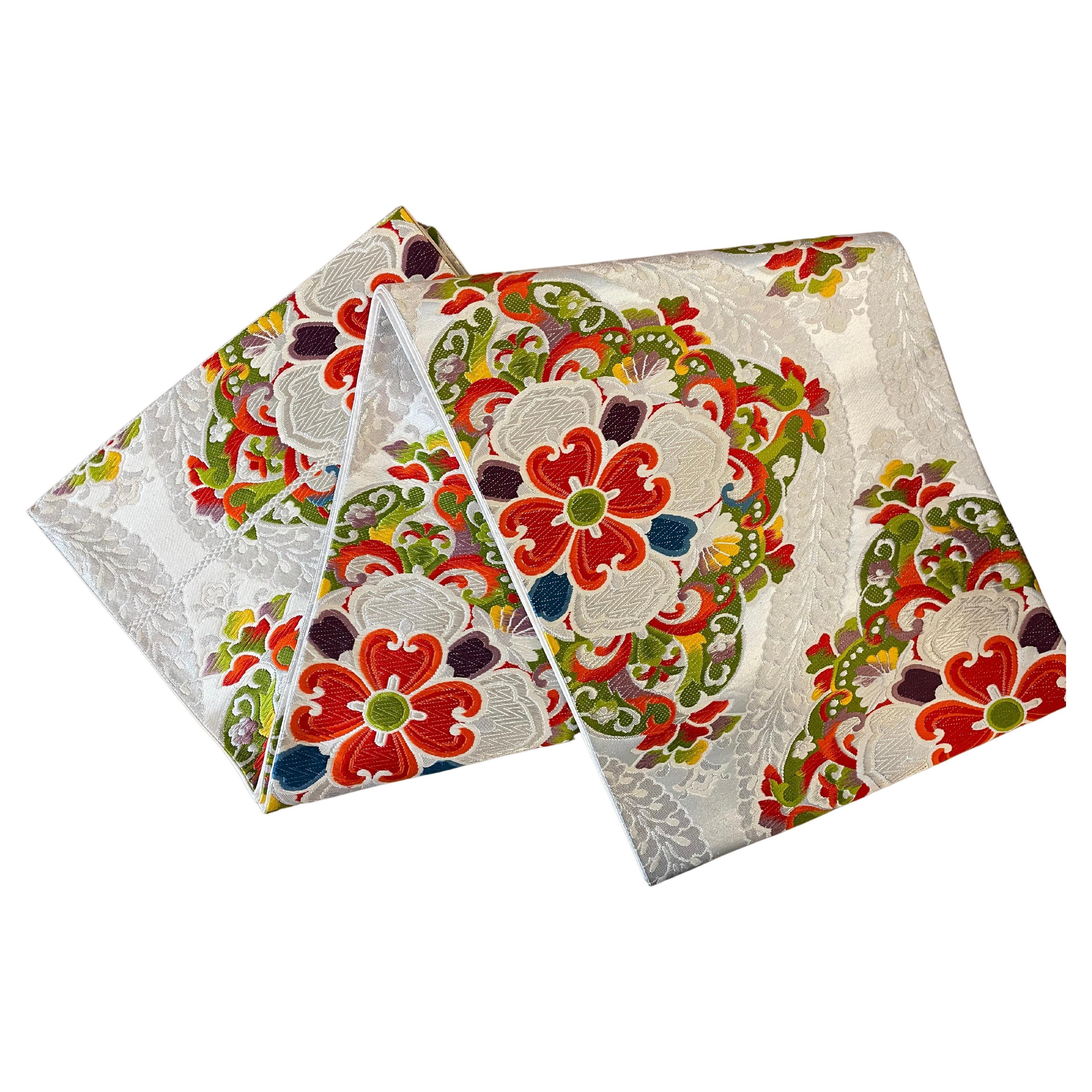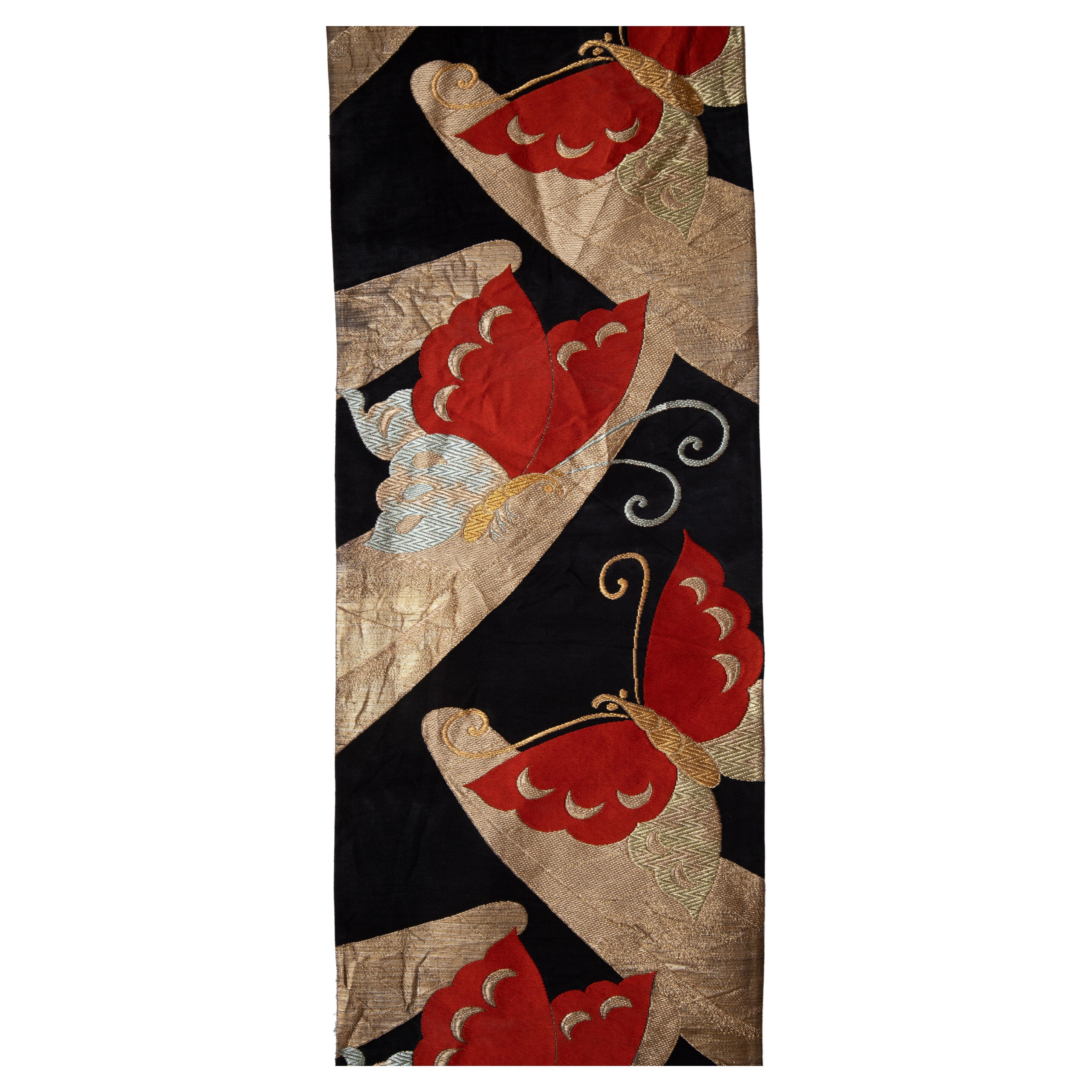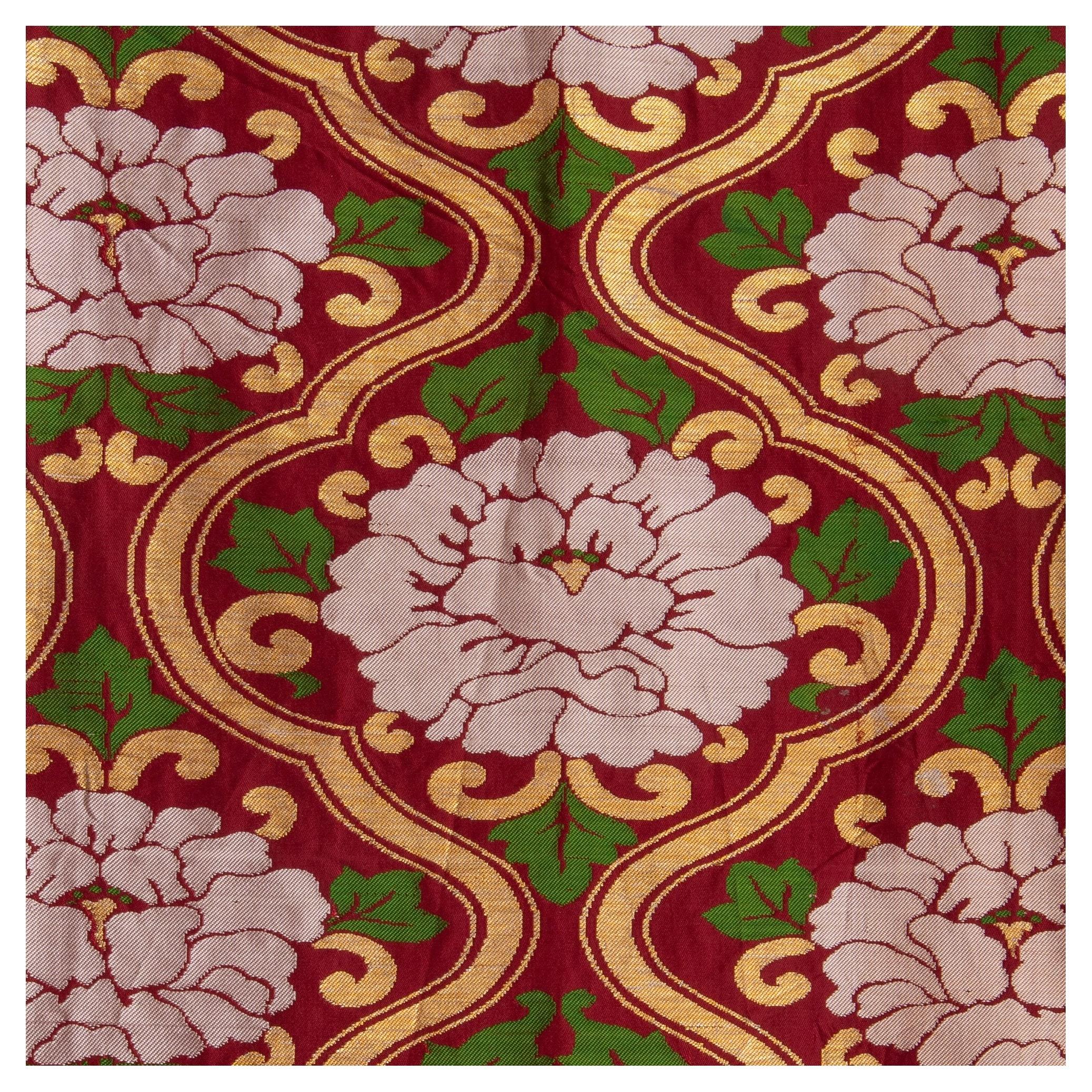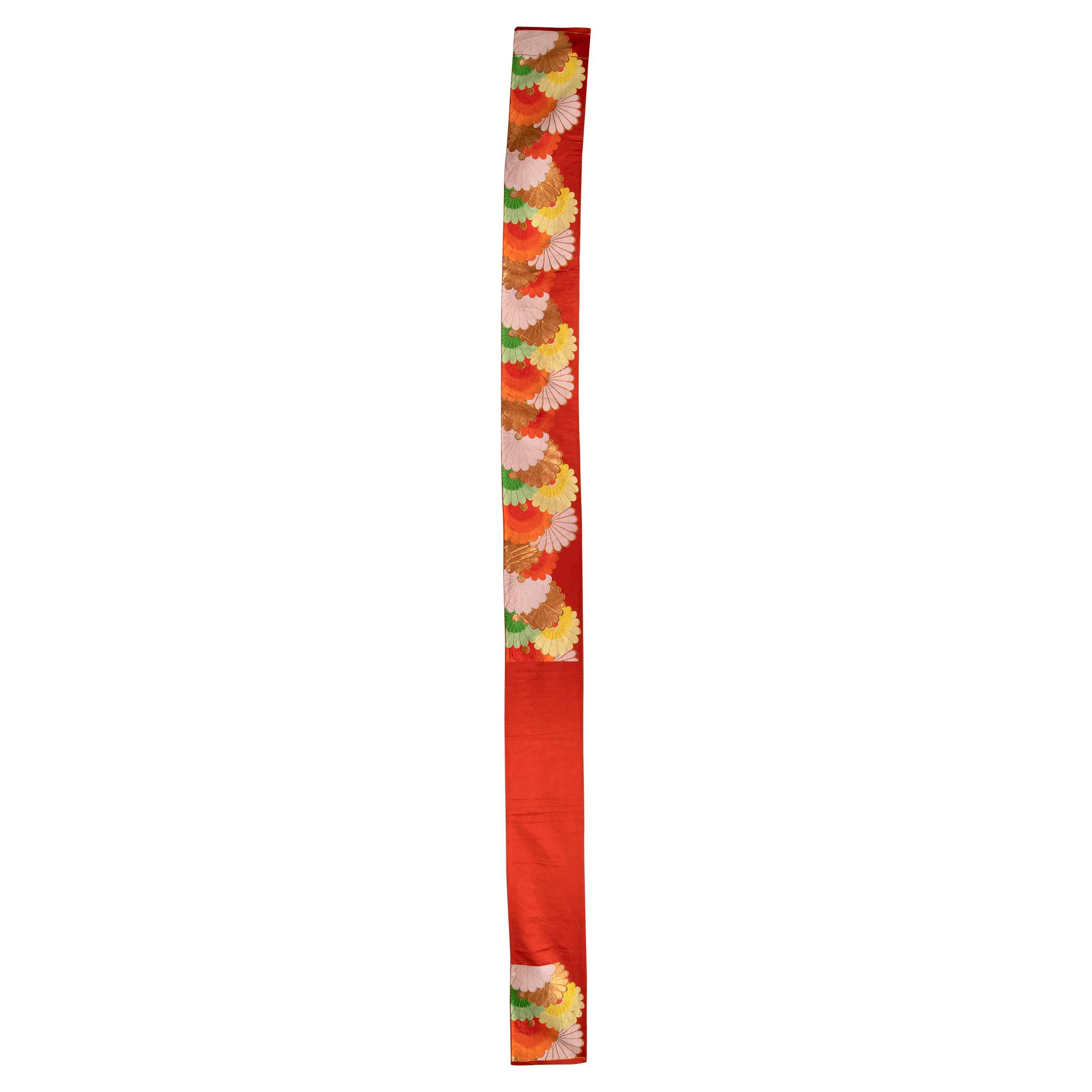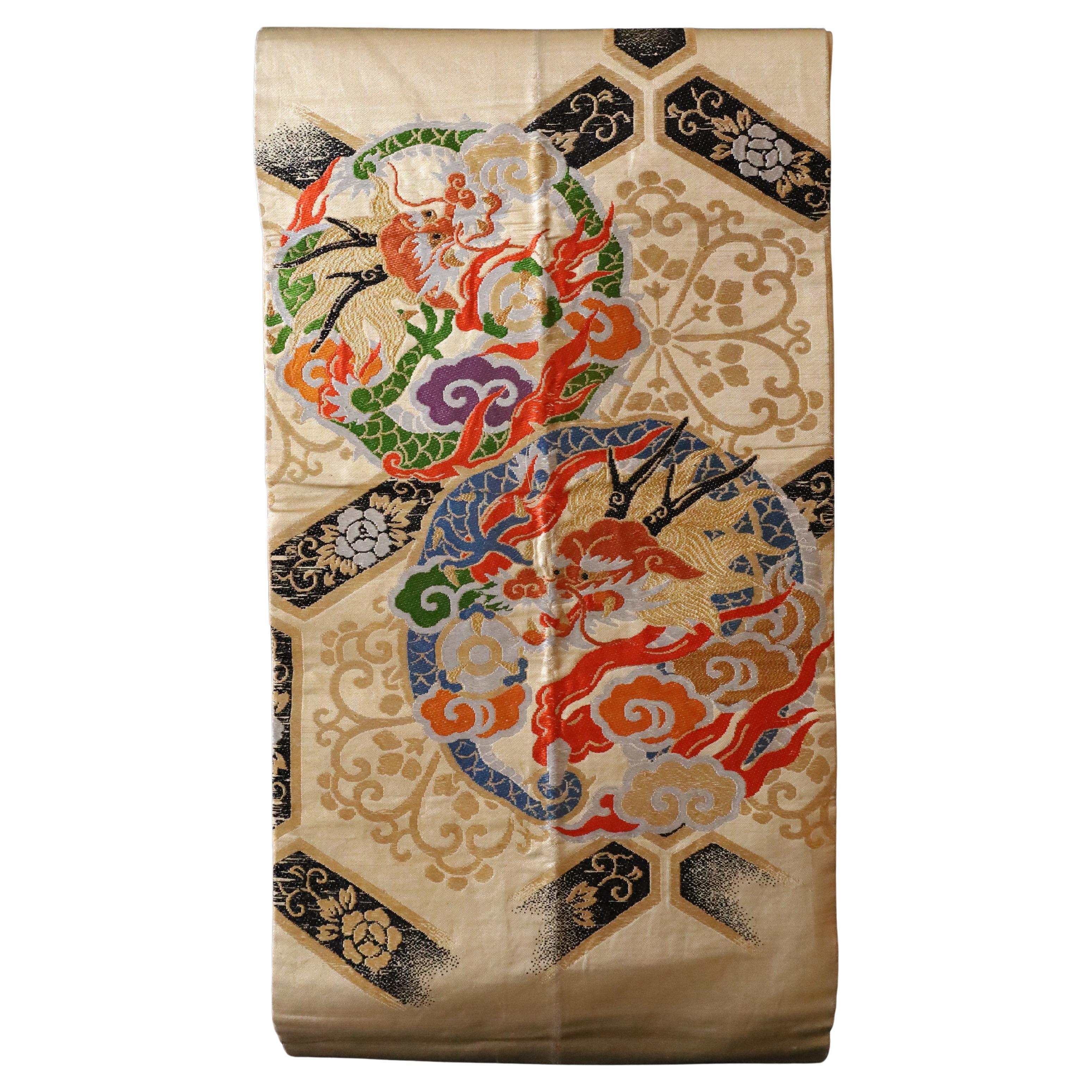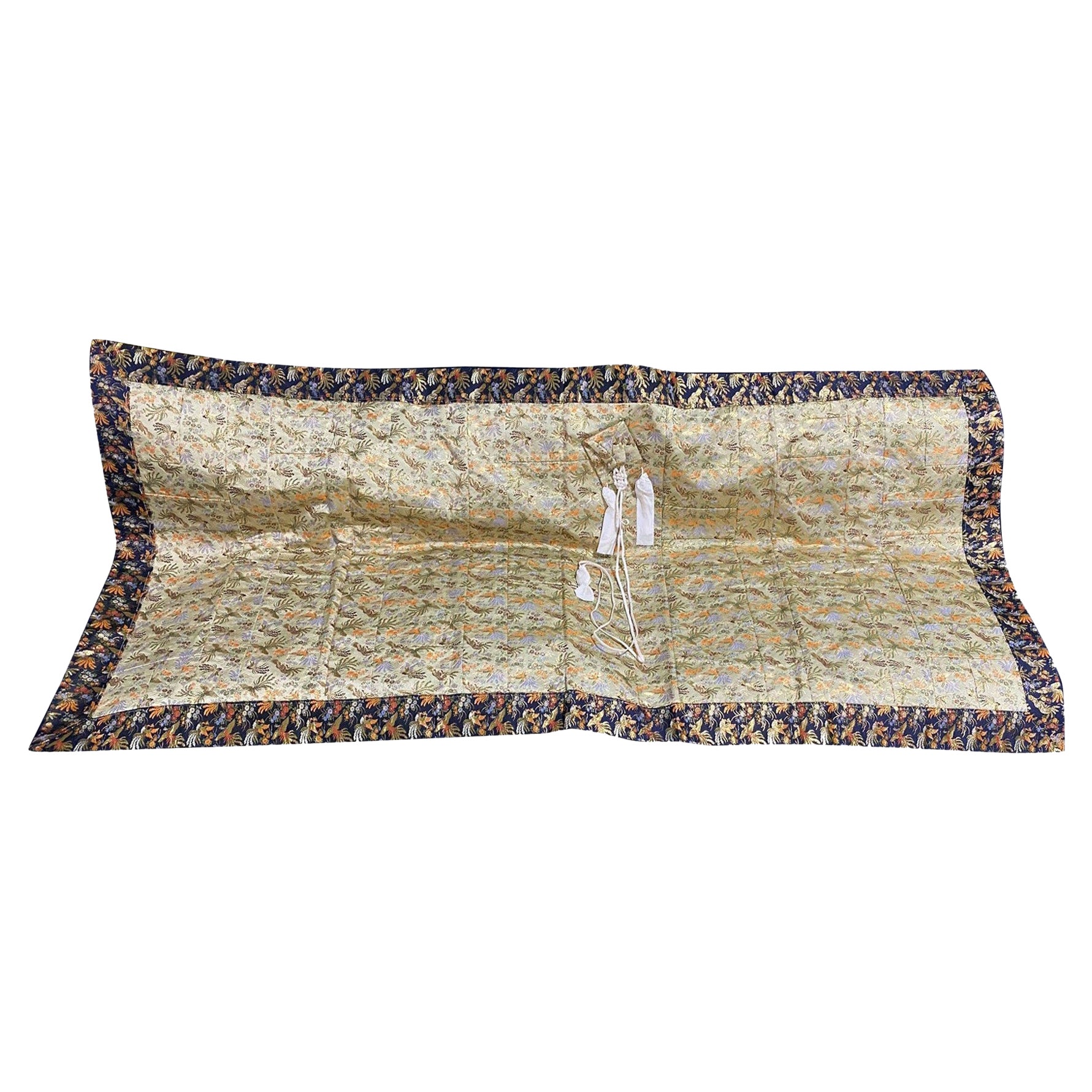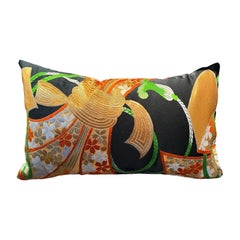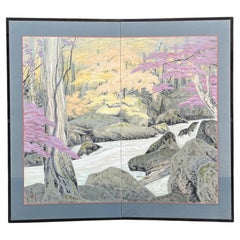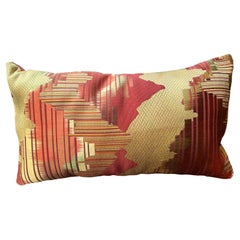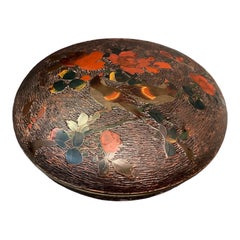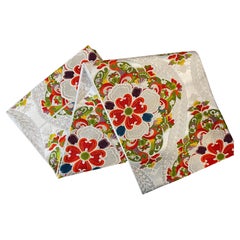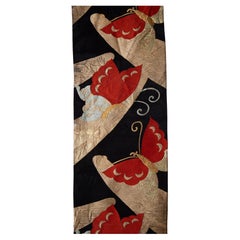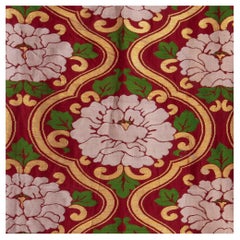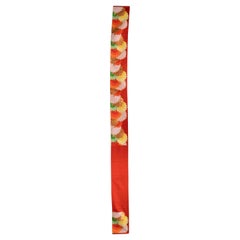Items Similar to Spectacular Nishinjin silk and metal threads Obi, Japan, circa 1960-70
Want more images or videos?
Request additional images or videos from the seller
1 of 7
Spectacular Nishinjin silk and metal threads Obi, Japan, circa 1960-70
$349.12
$436.4020% Off
£258.45
£323.0720% Off
€292
€36520% Off
CA$483.09
CA$603.8720% Off
A$532.60
A$665.7520% Off
CHF 278.64
CHF 348.3020% Off
MX$6,534.02
MX$8,167.5320% Off
NOK 3,507.52
NOK 4,384.4020% Off
SEK 3,280.08
SEK 4,100.1120% Off
DKK 2,224.28
DKK 2,780.3520% Off
About the Item
A very special high quality Nishijin, traditionaly wowen Japanese belt.
It can be used as a runner or as a wall decoration.
The wowen silk is more than 4 meters long!
the back is lined with a navy blue silk.
The silk and the metal threads have their original bright color!
An unique and very original touch to your interior.
- Dimensions:Height: 160.64 in (408 cm)Width: 12.21 in (31 cm)Depth: 0.12 in (3 mm)
- Materials and Techniques:Silk,Hand-Woven
- Place of Origin:
- Period:
- Date of Manufacture:1960/70
- Condition:Wear consistent with age and use. Very good condition with very minor traces of use in the back. Non visible on the front.
- Seller Location:PARIS, FR
- Reference Number:1stDibs: LU6491238879112
About the Seller
5.0
Recognized Seller
These prestigious sellers are industry leaders and represent the highest echelon for item quality and design.
Established in 1982
1stDibs seller since 2022
7 sales on 1stDibs
- ShippingRetrieving quote...Shipping from: PARIS, France
- Return Policy
Authenticity Guarantee
In the unlikely event there’s an issue with an item’s authenticity, contact us within 1 year for a full refund. DetailsMoney-Back Guarantee
If your item is not as described, is damaged in transit, or does not arrive, contact us within 7 days for a full refund. Details24-Hour Cancellation
You have a 24-hour grace period in which to reconsider your purchase, with no questions asked.Vetted Professional Sellers
Our world-class sellers must adhere to strict standards for service and quality, maintaining the integrity of our listings.Price-Match Guarantee
If you find that a seller listed the same item for a lower price elsewhere, we’ll match it.Trusted Global Delivery
Our best-in-class carrier network provides specialized shipping options worldwide, including custom delivery.More From This Seller
View AllLuxury Silk pillow from Sinapango Interiors Paris
Located in PARIS, FR
A spectacular lombar pillow wowen in silk and metal threads.
Buying handmade cushions from Sinapango Interiors Paris, crafted from vintage Obi silk made in Nishijin district in Kyot...
Category
2010s French Pillows and Throws
Materials
Silk
$129 Sale Price
20% Off
Two-panel folding screen, Nihonga, Hirai Baisen (1889–1969), early Shōwa era (19
Located in PARIS, FR
Two-panel folding screen, Nihonga, Hirai Baisen (1889–1969), early Shōwa era (1940s)
This two-panel screen is signed by Hirai Baisen (1889–1969), a major Nihonga painter who is only...
Category
20th Century Japanese Paintings and Screens
Materials
Paper
Luxury Silk pillow from Sinapango Interiors Paris
Located in PARIS, FR
A spectacular lombar pillow wowen in silk and metal threads.
Buying handmade cushions from Sinapango Interiors Paris, crafted from vintage Obi silk made in Nishijin district in Kyot...
Category
2010s French Pillows and Throws
Materials
Silk
$148 Sale Price
20% Off
Large Japanese Cloisonné Box and Cover, Japan, Meiji Period, 19th Century
Located in PARIS, FR
A rare Japanese bark tree large cloisonné box on metal from the Meiji period. Usually bark tree cloisonné was on porcelain (totai Shippo)
A very attracti...
Category
Antique Late 19th Century Japanese Metalwork
Materials
Metal
$2,510 Sale Price
25% Off
Japan, Pair of Hokai boxes in lacquered wood, Edo period, 1829
Located in PARIS, FR
Japan, Pair of Hokai boxes in lacquered wood, Edo period, 1829
Japan, Rare Pair of Hokai boxes in lacquered wood, Edo period, dated Bunsei 12, 1829.
Hokai boxes are traditionally use...
Category
Antique 19th Century Japanese Chinoiserie Decorative Boxes
Materials
Lacquer
Rare Japanese painting, Skeletons Studying, Shaku Kaiyin, Japan Meiji Period
Located in PARIS, FR
Skeletons Studying, Shaku Kaiyin, Japan Meiji Period
This ink-on-paper painting, mounted as a scroll with colored paper borders, is titled Skeletons Studying. It portrays a circle of...
Category
Antique Late 19th Century Japanese Paintings and Screens
Materials
Paper
$1,817 Sale Price
20% Off
You May Also Like
Japanese Silk Kimono Belt Fukuro-Obi 1970s /Table Runner
Located in Paris, FR
This is a Fukuro Obi made in Japan around 1970s.
It is made with Silk and it is in good condition.
Obi is a belt of varying size and shape worn with both traditional Japanese clothing like Kimono.Obi are categorised by their design, formality, material, and use, and can be made of a number of types of fabric, with heavy brocade weaves worn for formal occasions, and some lightweight silk obi worn for informal occasions.
Fukuro obi are slightly less formal than maru obi...
Category
Late 20th Century Japanese Showa Antiquities
Materials
Silk
$322 Sale Price
25% Off
Vintage Japanese Obi Textile, Mid 20th C
Located in Istanbul, TR
An obi in very good condition that can be utilized as a table runner, wall hanging.
Category
Mid-20th Century Japanese Pillows and Throws
Materials
Silk
Vintage Japanese Obi Textile, Mid-20th C
Located in Istanbul, TR
An obi in very good condition that can be utilized as a table runner, wall hanging.
Category
Mid-20th Century Japanese Pillows and Throws
Materials
Silk
Vintage Japanese Obi Textile, Mid-20th C
Located in Istanbul, TR
An obi in very good condition that can be utilized as a table runner, wall hanging.
Category
Mid-20th Century Japanese Pillows and Throws
Materials
Silk
Japanese Maru Obi with Gold Embroidered Dragons – Silk Brocade, Taisho to Showa
Located in Fukuoka, JP
A magnificent example of Japanese textile artistry, this vintage maru obi dates from the Taisho to early Showa period (circa 1920–1950). Woven in luxurious silk, it features a richly detailed brocade design with mythological dragons encircled by flames and stylized clouds—symbols of strength, protection, and imperial authority in Japanese culture.
The opulent gold and beige ground is accented with bold tones of red, green, black, and purple, showcasing intricate weaving techniques and vibrant color contrasts. Hexagonal panels with floral motifs in gold and black add structure and visual rhythm to the piece. Measuring 341 cm in length and 32 cm in width, this maru obi was traditionally worn for formal kimono occasions and would have wrapped fully around the waist.
Today, it makes a powerful statement as a display piece—whether mounted as wall art or draped as a textile sculpture—highlighting the beauty and craftsmanship of early 20th-century Japanese weaving...
Category
20th Century Japanese Showa Textiles
Materials
Cotton, Silk
Japanese Buddhist Monk Priest 7 Column Silk Brocade Kesa Ceremonial Temple Robe
Located in Studio City, CA
A wonderful, beautifully ornamented and somewhat rare fully intact Japanese Buddhist monk/ priest's Kesa ceremonial silk robe featuring various colorful birds in flight.
Kesa (which came from the Chinese word "kasaya") robes have been handmade/handstitched by monks/priests as an act of devotion as ceremonial robes for centuries in various Asian cultures (Japanese, Chinese, Korean, Vietnamese, Indian, etc.). The kesa is a rectangular garment designed to be worn over the left shoulder (see example image). The robes are made (often in a patchwork column pattern ranging from five, seven, nine or more pannels) specifically for fully ordained Buddhist monks, priests and nuns and are made from donations of exquisite textiles from wealthy patrons of Japanese Buddhist temples. The robes were used in daily ceremonies, temple gatherings, and private meditation.
Antique Kesa robes...
Category
Mid-20th Century Japanese Showa Textiles
Materials
Textile, Brocade, Silk
More Ways To Browse
Obi Belt
Vintage Style Stockings
Vintage Ticking Pillows
1930s Vintage Bedspreads
Afewerk Tekle
Andy Warhol Pillow
Antique And Artisan Gallery
Antique Silk Table Runner
Atelier Versace Pillow
Aubusson Table Runners
B Viz Pillows
B Viz
Castello Branco
Dedar Hermes Fabrics
Fleur De Lis Tapestry
Fortuny Dandolo
Frette Duvet
Hermes Paris Eiffel
